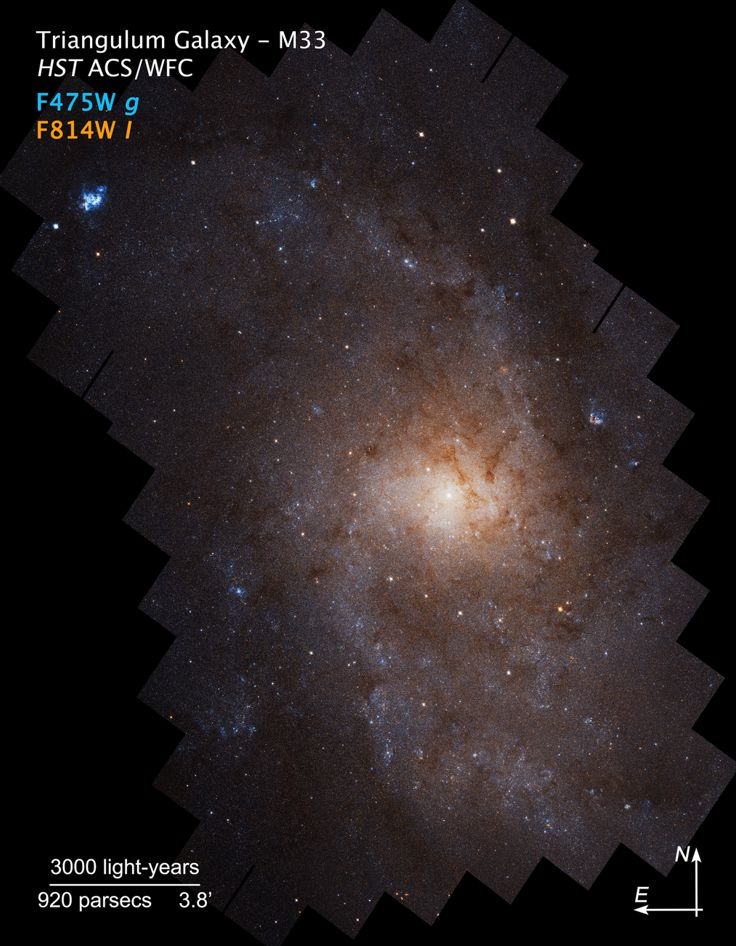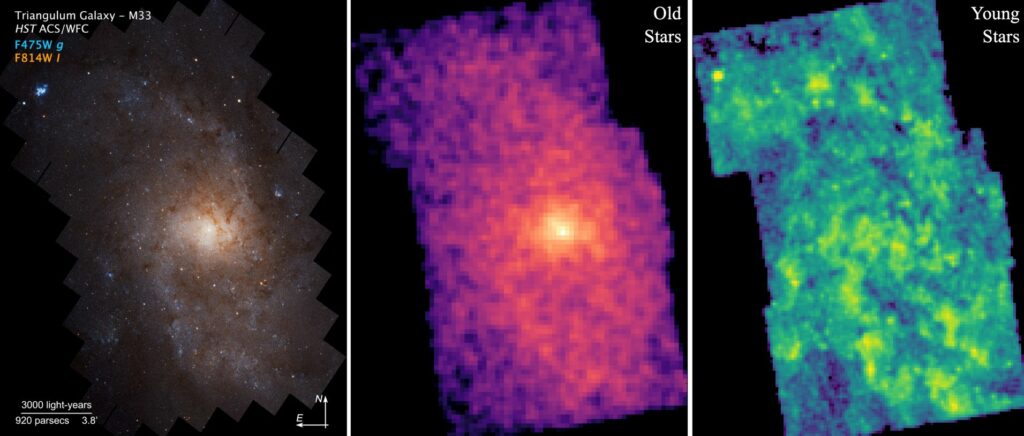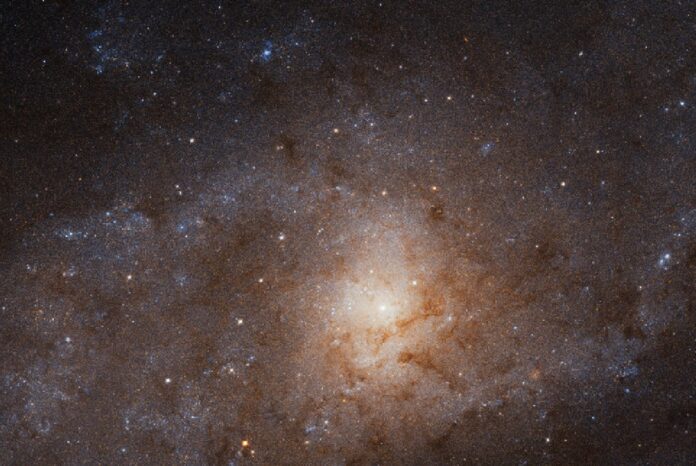The Triangulum galaxy has captured the attention of astronomers for years. However, they have never seen anything exactly like this before.
A team led by researchers from the University of Washington and the Center for Computational Astrophysics will present findings from the Panchromatic Hubble Andromeda Treasury Triangulum Extended Region, or PHATTER, a survey on Jan. 11 at the 241st meeting of the American Astronomical Society in Seattle.
This project is providing astronomers with their first detailed look at the Triangulum galaxy’s many star populations.
Scientists found that this satellite galaxy, which is close to the much larger Andromeda galaxy, has two very different structures that depend on how old the stars are.
“The youngest stars and the oldest stars in the Triangulum galaxy — which we can separate out using multiple wavelength filters on the Hubble Space Telescope — are organized very differently,” explains UW researcher Adam Smercina. “This is surprising. For a lot of galaxies, like the Milky Way and Andromeda, the stars are distributed roughly consistently, regardless of their age. That is not the case with Triangulum.”
The Triangulum galaxy, measuring 61,000 light-years in width, is the third largest galaxy in the local group after Andromeda and the Milky Way. It is characterized by a flocculent structure, with multiple small spiral arms extending from a central point, as seen in previous lower-resolution images.
The PHATTER survey, conducted by the Hubble Space Telescope, provided a detailed and unprecedented view of Triangulum by capturing hundreds of high-resolution images of various parts of the galaxy over a period of more than a year, spanning 108 orbits.
The team combined the individual images to create an extensive and high-resolution dataset of Triangulum that for the first time displays the galaxy’s individual stars in a broad region at its center.

Additionally, the Hubble Space Telescope’s array of filters allowed the researchers to classify the stars by age.
The distribution of young, massive stars, those less than a billion years old, generally followed the well-known flocculent pattern of the Triangulum galaxy.
However, the distribution of its older, redder stars follows a totally distinct pattern, with two spiral arms emanating from a rectangular bar in the galaxy’s core.

Without this sort of thorough scan, it would have been exceedingly challenging to observe this mostly unknown and hidden feature of the Triangulum galaxy, according to Smercina.
Although older stars make up the bulk of Triangulum’s mass, Smercina claims that they are fainter than their younger counterparts. That could help to explain why low-resolution photographs of the galaxy tend to show the “flocculent” pattern more often.
The team also doesn’t know why young and old stars in Triangulum are spread out in such different ways.
There are still many unknowns about the genesis and development of satellite galaxies in general.
There are many different kinds of satellite galaxies, and their shapes can be changed by how they interact with their parent galaxies. The Large Magellanic Cloud, the Milky Way’s biggest satellite galaxy, is comparable to Triangulum in terms of size and mass but differs from it in terms of shape, being more globular and irregular owing to its closeness to the Milky Way.
The ongoing analysis of the PHATTER survey should help us understand how these types of galaxies form and how they interact with their larger neighbors.
By tracking the history of star formation in Triangulum and comparing various regions of the galaxy, the team hopes to build on these preliminary results.
One of the main objectives of the PHATTER survey, according to Smercina, was to gather the kind of thorough, high-resolution data on this prominent satellite galaxy that would enable researchers to thoroughly “examine its structure, trace its history of star formation,” and compare what they found to “theories of galaxy formation and evolution”.
“We’re already finding surprises.”
Image Credit: A. Smercina/M.J. Durbin/J. Dalcanton/B.F. Williams/University of Washington/NASA/ESA
